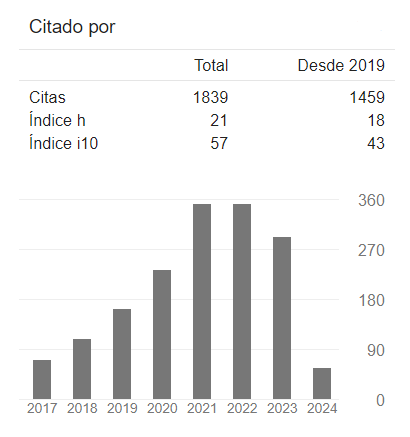Editorial Policies on the Use of AI
Editorial Policies on AI Use Adopted by RATIO JURIS
Ratio Juris adheres to international ethical principles regarding the use of AI in scientific publishing. Authors must disclose any use of these tools, assuming full responsibility for their content. Given the rapid evolution of technology, these policies will be periodically reviewed to ensure their relevance.
Guidelines for Disclosure and Use of AI Tools
Authors must explicitly declare the use of AI tools, specifying:
- The name of the tool.
- How it was used.
- Clarifying that AI systems cannot be listed as authors under any circumstances.
These guidelines align with the policies of major publishers and organizations, including Elsevier, Springer, Wiley, Cambridge, ACS, Emerald, AIP, IEEE, AAAS, COPE, WAME, JAMA, Taylor & Francis, and Science:
|
Topic |
Common Policies |
|
AI Authorship |
- Universal prohibition: AI tools (LLMs, chatbots) cannot be listed as authors/co-authors (Elsevier, Springer, Wiley, Cambridge, ACS, Emerald, AIP, IEEE, AAAS, COPE). |
|
Disclosure of Use |
- Mandatory transparency: AI use must be declared in: |
|
AI-Generated Content |
- Images: Prohibited unless part of research methodology (Elsevier, Springer, AAAS). |
|
Accountability |
- Authors are responsible for the accuracy, originality, and ethics of all content, including AI contributions (All publishers). |
|
Exceptions |
- Permitted if AI is the research subject (e.g., methodological studies in Elsevier/JAMA). |
Table adapted and described based on information from Elsevier, Springer, Wiley, Cambridge, ACS, Emerald, AIP, IEEE, AAAS, COPE, WAME, JAMA, Taylor & Francis, and Science.
Authorship Criteria Based on the CRediT Taxonomy
Only human contributors may be listed as authors, in accordance with their role in the research and writing process, as defined by the Contributor Roles Taxonomy (CRediT):
|
Taxonomic Category |
Role Description |
|
Conceptualization |
Development of core ideas; formulation of legal research questions; hypothesis/thesis proposal. |
|
Methodology |
Design of legal methodology (dogmatic, hermeneutic, comparative, socio-legal, etc.); analytical framework. |
|
Software |
Development of legal software, normative analysis systems, legislative databases, or legal simulators. |
|
Formal Analysis |
Application of analytical techniques (jurisprudential review, doctrinal analysis, legal statistics, normative mapping). |
|
Investigation: Experimentation |
Execution of case studies, file reviews, empirical analysis, interviews, or legal fieldwork. |
|
Investigation: Data Collection |
Gathering legal documents, comparative legislation, court rulings, doctrines, or testimonies. |
|
Resources |
Provision of legal materials, normative databases, specialized literature, or access to archives. |
|
Data Curation |
Organization, systematization, and annotation of legal documents for analysis. |
|
Writing – Original Draft |
Drafting the manuscript (introduction, theoretical framework, argumentation, conclusions). |
|
Writing – Review & Editing |
Critical revision; contributions to legal precision, citations, and argumentative structure. |
|
Visualization |
Creation of comparative tables, normative maps, legal infographics, etc. |
|
Supervision |
Academic oversight; validation of theoretical-methodological approach. |
|
Project Administration |
Research coordination, task organization, and editorial compliance. |
|
Funding Acquisition |
Securing institutional/external funding for the research. |
Table adapted from the Contributor Role Taxonomy (CRediT, 2025).
Editorial Adaptation by: José Fernando Valencia Grajales, based on the cited
References.
- AIP Publishing. (2024). Policy on AI-generated content, https://publishing.aip.org/resources/researchers/policies-and-ethics/authors/
- American Chemical Society (ACS). (2024). AI in publishing: The ghost writer in the machine. https://axial.acs.org/publishing/ai-in-publishing-the-ghost-writer-in-the-machine
- Cambridge University Press. (2024). AI contributions to research content. https://www.cambridge.org/core/services/authors/publishing-ethics/research-publishing-ethics-guidelines-for-journals/authorship-and-contributorship/fai-contributions-to-research-content
- COPE, Committee on Publication Ethics (2023). Authorship and AI tools Position statement: Authorship and AI tools. https://publicationethics.org/guidance/cope-position/authorship-and-ai-tools
- COPE, Committee on Publication Ethics (2023). Artificial intelligence and authorship. https://publicationethics.org/news-opinion/artificial-intelligence-and-authorship
- NISO, Organización Nacional de Estándares de Información, (2025) CRediT role descriptors. https://credit.niso.org/contributor-roles-defined/
- Elsevier. (2024). The use of AI and AI-assisted technologies in writing for Elsevier. https://www.elsevier.com/about/policies/publishing-ethics-books/the-use-of-ai-and-ai-assisted-technologies-in-writing-for-elsevier
- Emerald Publishing. (2024). Emerald Publishing’s stance on AI tools and authorship. https://www.emeraldgrouppublishing.com/news-and-press-releases/emerald-publishings-stance-ai-tools-and-authorship
- Flanagin A, Bibbins-Domingo K, Berkwits M, Christiansen SL. (2023). Nonhuman “Authors” and Implications for the Integrity of Scientific Publication and Medical Knowledge. JAMA. 2023;329(8):637–639. doi:10.1001/jama.2023.1344 https://jamanetwork.com/journals/jama/fullarticle/2801170
- IEEE. (2025). Guidelines for artificial intelligence (AI)-generated text. https://conferences.ieeeauthorsenter.ieee.org/author-ethics/guidelines-and-policies/submission-policies/
- AAAS, American Association for the Advancement of Science (2024). About the (AI)² Initiative. https://www.aaas.org/ai2/about
- ScienceAdviser (2024). Editorial policies: AI-generated content. https://www.science.org/content/page/science-journals-editorial-policies#:~:text=ln%20addition%2C%20a
- Springer Nature. (2024). Artificial intelligence (AI) editorial policy. https://www.springer.com/de/editorial-policies/artificial-intelligence--ai-/25428500
- Taylor & Francis. (2024). Responsible use of AI tools in academic content creation. https://authorservices.taylorandfrancis.com/editorial-policies/#use-of-ai
- WAME, World Association of Medical Editors (2023). Chatbots, Generative AI, and Scholarly Manuscripts. https://wame.org/page3.php?id=106
- Wiley. (2025). Ethics guidelines: Use of generative AI. https://authorservices.wiley.com/ethics-guidelines/index.html#use-of-ai










































